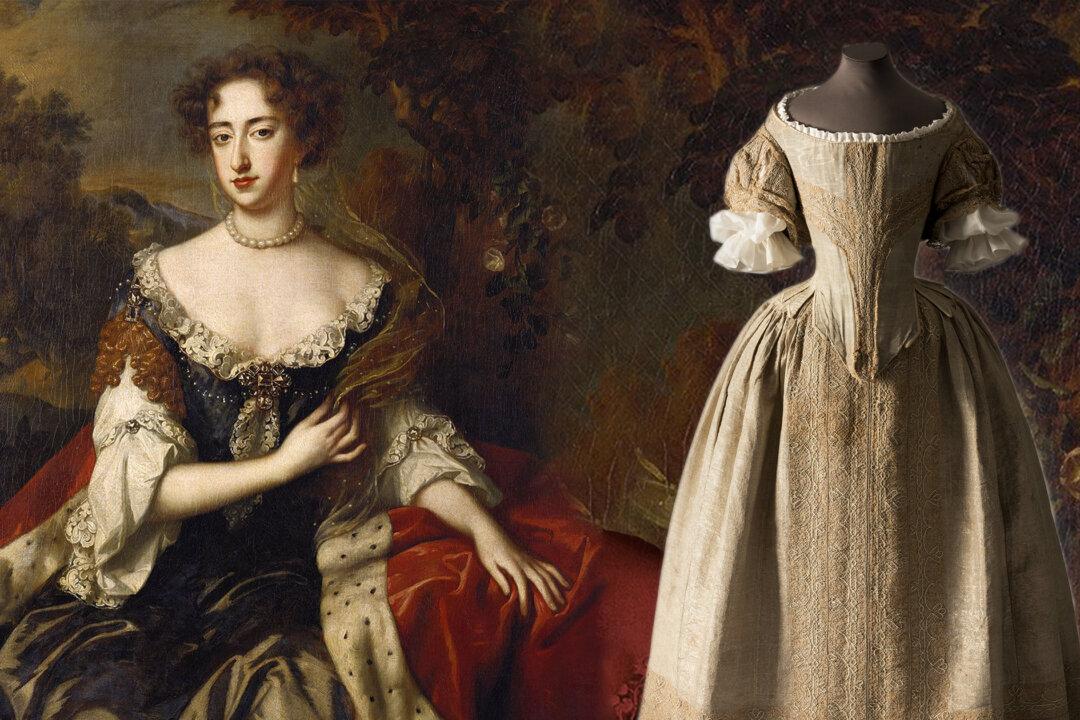A stunning, rare 17th-century dress, once worn by a wealthy West Country British woman to the royal court, has survived for over 360 years in pristine condition thanks to the historians and curators that have preserved it.
The Silver Tissue Dress, once belonging to Lady Theophilia Harris of Bath in England, is comprised of a whalebone bodice and skirt handmade from fine silk woven with real silver thread, the “silver tissue” from which the dress gets its name.





